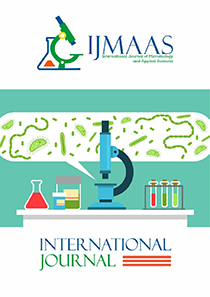Detection of Biofilm formation and Antibiotic Resistance Profiles in Bacterial Isolates from Urinary Specimens of Female Students at a Tertiary Institution
Vol 3, Issue 1, 2024
KEYWORDS
Uropathogens, biofilm formation, antibiotic susceptibility, resistance profiles, P. aeruginosa, S. aureus.
Abstract
This study focused on assessing biofilm formation and antibiotic susceptibility of uropathogens in female students at Federal University Otuoke, Bayelsa State, Nigeria. A total of Ninety (90) urine specimens were collected and analyzed using conventional microbiological methods. Antibiotic susceptibility testing was conducted by standard laboratory guidelines. Biofilm production was determined using phenotypic methods (congo red agar method). The antibiotic resistance profile was via plasmid profile analysis. The data obtained was subjected to an Analysis of Variance (ANOVA). Out of 90 urine specimens, 25(27.78%) exhibited significant bacteriuria. Notably, Citrobacter spp, Pseudomonas aeruginosa, Klebsiella pneumoniae, Enterobacter spp, Proteus mirabilis, and Staphylococcus aureus were identified as prominent uropathogens. The Gram-negative and Gram-positive bacteria isolates showed a significant difference (P<0.05) in antibiotic susceptibility. Citrobacter spp 5(62.5%) was susceptible to ofloxacin and nitrofurantoin. Enterobacter spp 2(50%) was susceptible to levofloxacin while resistant to most of the antibiotics. P. aeruginosa exhibited resistance to all antibiotics. K. pneumoniae was highly sensitive to Oflaxacin and cefixime with 2(50%) respectively, while P. mirabilis sensitive to imipenem, ceftriaxone sulbactam, and levofloxacin with 2(50%) respectively. Specific resistance was also observed for K. pneumoniae and P. mirabilis. Levofloxacin, azithromycin, and ofloxacin were seen to be effective antibiotics against S. aureus with 2(100%) respectively. The bacterial isolates were mainly resistant to ciprofloxacin, imipenem, cefuroxime, cefixime, amoxicillin-clavulanate, cefotaxime, gentamycin, and ceftriaxone. Citrobacter spp, Enterobacter spp, Staphylococcus aureus, and Pseudomonas aeruginosa were multidrug-resistant and identified as biofilm producers. Following curing, Enterobacter spp and P. aeruginosa which had previously showed high resistance to majority of the antibiotics became sensitive while S. aureus still remained resistant to all the antibiotics. Enterobacter spp. and Pseudomonas aeruginosa were sensitive to tetracycline and ciprofloxacin with a diameter zone of 19mm and 24mm respectively. Plasmid analysis indicated the presence of MDR plasmids in Enterobacter spp, Pseudomonas aeruginosa, and Staphylococcus aureus thus, suggesting their role in drug resistance in UTIs. The study underscores the importance of promoting proper hygiene and monitoring antibiotic resistance, to address the growing issue of UTIs, especially among females.
Current: Vol. 4, Issue 1, 2025

Call for papers
The International Journal of Microbiology and Applied Sciences warmly welcome your valuable articles for publication.
